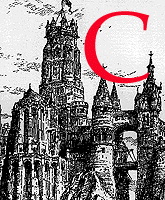[This essay originally appeared in The Art Bulletin, 64 (1982), 646--55.]

The Finding of the Saviour in the Temple. William Holman Hunt. 1854-60. Oil on canvas, 33 ¾ x 55 ½inches.

ritics immediately perceived the significance of Hunt's challenge to older forms of art in The Finding of the Saviour in the Temple. For example, when reviewing J. R. Herbert's The Sower of Good Seed, the Reader, which took its stand on neutral ground, asked
Who shall venture to pronounce dogmatically in favour either of the ancient or modern interpretation of the facts of Scriptural history? To those who are deeply moved by Da Vinci and Raphael, Herbert's "The Encampment of the Children at the foot of Sinai," at Westminster, is but a congregation of Bedouin Arabs and their Chiefs; and the "Christ in the Temple," by Holman Hunt, reflects but the interior of an Eastern Cafe. To vast numbers of people, these works speak in a new and living voice.
Hunt himself believed that his method of representing the events of the Bible narrative was demanded by the spirit of the age, and within a few years after the painting was initially exhibited an in- creasing number of critics accepted his approach because it had found favor with the Victorian audience. Hunt's works, as the Reader so well put it, "speak in a new and living voice" to many, and that itself was a proof of the method. Not surprisingly, William Michael Rossetti, one of the painter's oldest friends, had words of praise for The Finding of the Saviour in the Temple, and for him it was the embodiment of a new way of painting scriptural narrative. For example, when he reviewed Barwell's Young Saviour Observing the Hypocrites (1865) in Fraser's, he pointed out that the painter's ambitious effort was "a well directed one," because it "proceeds on the 'natural' or 'actualizing' hypothesis of such sacred subjects, like Mr. Holman Hunt's Temple picture."
Even the Art Journal began to weaken a bit, and when it commented upon paintings of Christ in the Temple by Edward Armitage and W. C. Dobson at the 1866 Royal Academy, it alluded to Hunt; when discussing these painters' rendering of costume, which it took to be a compromise between "the Academic and the naturalistic," it granted that "it is a question, indeed, whether under the prevailing temper of the English mind an ideal or purely imaginative treatment would be tolerated." Hunt's success with his public had begun to win toleration, if not approval, from the conservative critics. As his method of scriptural naturalism edged into critical respectability, the reviewers looked around to find historical precedent for it. The Art Journal review of Armitage and Dobson, for example, decided that "Horace Vernet and other French artists led the way" — just the opinion to infuriate the intensely nationalistic Hunt! Of course, no one could reasonably claim that he had invented the use of naturalistic details in history painting or high art, nor would Hunt have wished to do so. As he willingly admitted, the precise style that the young painters employed in the early years of the Pre-Raphaelite Brotherhood owed a great deal to Maclise, Mulready, and Dyce, and it was Millais, not Hunt, who led the way in using this style for a scriptural subject.

Christ in the House of His Parents. 1849-50. John Everett Millais. Oil on canvas, 34 x 55 inches; 864 x 1397 mm. Tate Britain, London. N03584. Purchased with assistance from the Art Fund and various subscribers 1921. Image released under Creative Commons CC-BY-NC-ND. Click on image to enlarge it.
In fact, Hunt was still trying to gain admission to the Royal Academy schools in 1842 when the Illustrated London News explained the ancestry of H. Howard's Aaron Staying the Plague. According to this reviewer, Howard's picture belonged to that department of art,
where pure history is elevated and touches the dramatic, however noble the fact, or however ordinary or simply human; & that section peculiarly English, of which West's "Death of Wolfe" may be considered the foundation — a series of works with the most scrupulous attention, & minute research with regard to all that pertains to date, locality, costume & custom; whilst masses of accumulated detail are wondrously arranged, with due subordination to the main object of the work — the illustration of some event of real history.
However much Hunt might have objected to tracing his artistic ancestry back to Benjamin West, an artist whose work he particularly disliked, there can be little doubt that Hunt was but one of the latest and most extreme advocates of adding naturalistic details and genre elements to sacred history. What critics objected to was the degree to which he would carry his researches, a degree that, they claimed, precluded any "due subordination to the main object of the work."
To the end of his career, however, Hunt insisted that although his own love of detail was not necessarily required of a true Pre-Raphaelite style, nonetheless it was what defined his particular Pre-Raphaelite vision of matter and spirit. In his Uffizi Self-portrait, William Holman Hunt presents himself as an artist at work. In particular, he appears as a painter determined to elevate detailed pictorial naturalism above the merely prosaic by using it to depict an exotic subject: this exotic subject is here represented by his Oriental costume, which also serves to portray him as an adventurous pilgrim in the service of art.
- Introduction
- Private Meanings: His Family Program
- Public Meanings (I): Hunt as Oriental Traveler
- Public Meanings (II): Hunt as Religious Naturalist
Last modified 12 June 2007